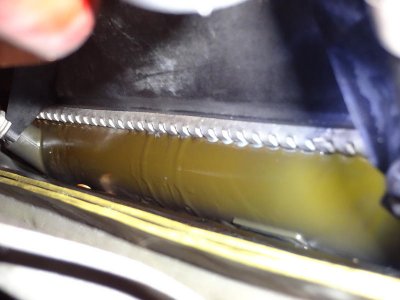Ravi, I think I disagree here. To my knowledge, as soon as the coolant temp hits ~178 the thermostat will cause the fan to switch on until it drops below that, at which time the fan will turn off.
The OEM Low / High setup is 183 for lowspeed, 194 for highspeed. (Section 23 of FSM). The fan will remain on until it drops below the lower threshold. Having a dual stage setup like this is awesome when you have a large system... It maintains a much more consistent temperature throughout the system!
My statement simply points out that the OEM system is quite efficient as my car usually sits around 180-190 and the highspeed is rarely on. When I come to lowspeed turns, occasionally the car will exceed my trigger of 194 and kicks on the highspeed. Especially Firebird West where there is alot of lowspeed extended turns! Only in the super hot summers does my car exceed the 200 degree mark and trigger the high speed while out on track!
But even so, I still recommend an aftermarket radiator! The OEM Plastic caps WILL fail eventually!
My TT RX7 FD had a dual stage fan as well, after careful research, I ended up eliminating the first stage when I added ducting to the system. Simply because the first stage was causing a air buffetting effect that basically caused the highspeed to kick on alot while at high speeds. When I V-Mounted the system, and ducted it properly and removed the stage 1, the car maintained a lower overall temperature by increasing the airflow by removing the air restricting stage 1. It wasn't optimal for street driving as the removal of the stage 1 fan caused the temperature at low speed to vary greatly.
My point here is the first stage is great for low speed temperature control but usually results in lower cooling efficiency under trackday / enduro type conditions. I may disable the low speed next event and datalog and see if the RX7 experience will carry over.
My NSX will get mounted at an angle eventually once the ABS is gone and I have a hood that will allow this to be efficient! Probably will be eliminating stage one again!







